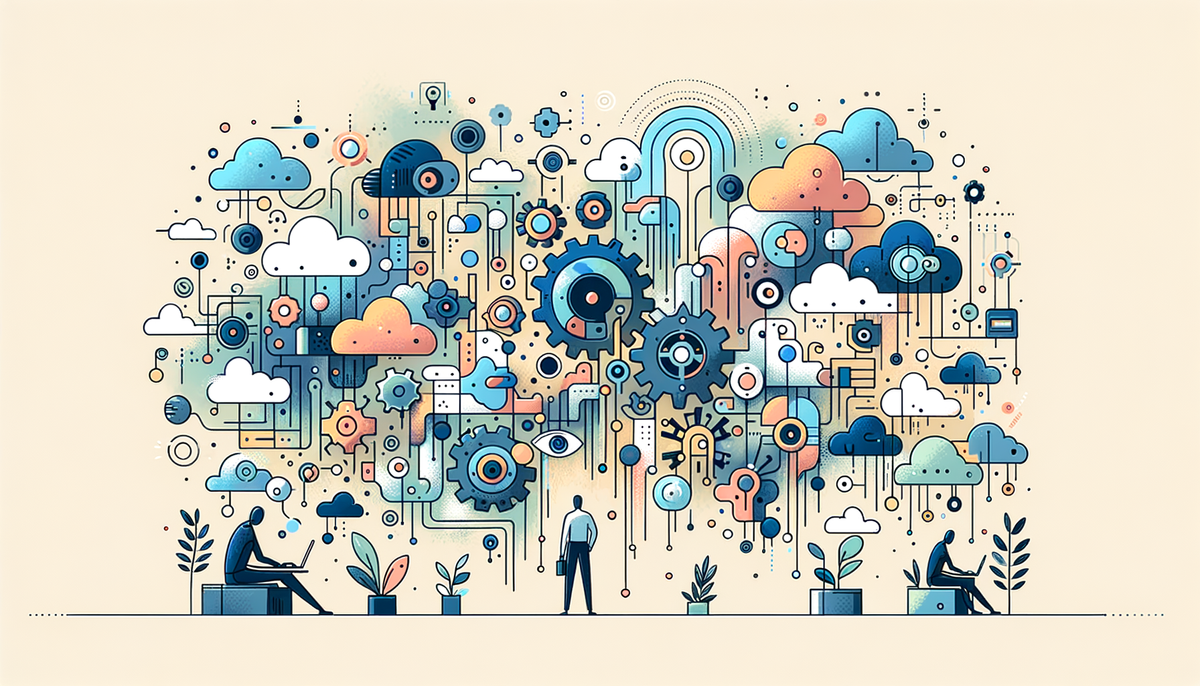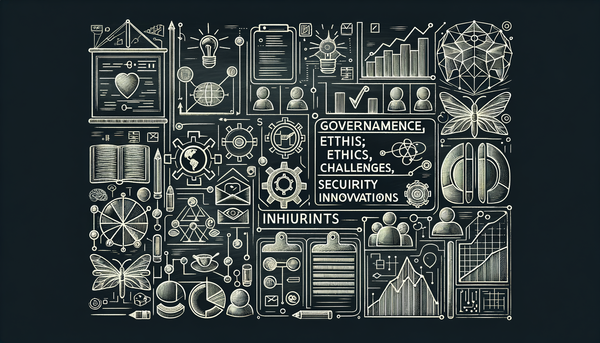AI News Updates – Anker Deal, Google Agreements, and AI Empowerment

Did you know that 94% of modern managers are already leveraging AI to drive vital decisions? This dynamic integration of AI into everyday processes—from web content scraping battles and reinvented browsing experiences to evolving enterprise architectures and grassroots disaster recovery—signals that we are at a turning point in technology. A myriad of innovative applications reminds us that AI is not just a tool for automation but a transformative force reshaping industries, bolstering consumer hardware, and even redefining leadership and public policy.
Breaking Barriers in Digital Content and Browsing
A fierce tug-of-war over digital ownership is underway as highlighted by a WSJ report on the AI scraping fight. The trial and error process of data extraction and web scraping has forced tech companies to reassess their strategies and intellectual property rights amid AI-driven innovations. This debate now threatens to alter the fabric of how information is aggregated online.
In tandem with the challenges of digital content scraping, a pioneering step forward in web browsing has emerged. Perplexity’s launch of Comet, an AI-powered browser, promises to overhaul the internet experience. With its intelligent Comet Assistant integrated seamlessly into the user interface, tasks such as summarizing emails, managing calendars, and swiftly navigating content become a breeze. Despite its occasional hiccups with complex queries like booking long-term parking at busy airports, the initiative brings to mind the transformative potential of AI—much like when Eric Schmidt famously remarked,
“AI will be the most transformative technology since electricity.”
This disruption in the web browsing domain not only challenges entrenched platforms like Google Chrome and Safari but also forces users to reconcile efficiency with privacy. For those who are curious about further evolutions in the online realm, exploring our updates in AI Revolution: Latest Updates on the AI Landscape offers additional insights into this unfolding narrative.
Redefining Enterprise AI: From RAG to Agent-based Architectures
The enterprise space is witnessing an evolutionary leap as companies transition from Retrieval-Augmented Generation (RAG) architectures to more secure, efficient agent-based systems. This paradigm shift comes in response to the significant vulnerabilities inherent in centralized models, where data integrity and freshness become jeopardized. RAG systems, once a straightforward method for amplifying AI outputs, now face criticism for gathering sensitive data in one susceptible repository—issues that resonate loudly in regulated industries like healthcare and finance.
Agent-based AI architectures present a welcome upgrade, grounding real-time access to data directly from source systems without the dangers of data centralization. Organizations now enjoy enhanced security protocols, improved user experiences, and safeguarded regulatory compliance. For instance, Grand Canyon Education’s deployment of a secure chat platform that redacts sensitive information in real time serves as an inspiring case study in effectively mitigating risks.
This shift is not merely technical; it represents a maturation of AI practices in the business world. As enterprises recalibrate, the move away from RAG acknowledges that convenience must never compromise security. For further explorations into these trends and their implications, consider checking our detailed discussion in AI Innovations and Their Wider Impacts.
Innovative Consumer Hardware and Desktop AI Enhancements
Consumers are equally treated to exciting improvements in hardware that underline AI’s imprint on daily tech interactions. A notable example is the Anker Prime charging station—a 6-port powerhouse that recently dropped its price significantly, offering remarkable efficiency with rapid charging capabilities. With features like a 140W max output and AI-driven power management modes, this device transforms a mundane necessity into a sophisticated charging ecosystem. The editors at Macworld have lauded this product for its combined elegance and performance.
On the desktop front, Microsoft is preparing to bring the benefits of Copilot+—previously limited to a select range of laptops—to broader desktop users. Thanks to Intel’s refreshed Arrow Lake processors equipped with next-generation Neural Processing Units, capable of 40 trillion operations per second, this leap forward could soon redefine productivity and interactivity. This integration is illustrative of how computing power and AI can converge to revolutionize user experiences at both personal and professional levels.
Together, these enhancements underscore a tangible trend: AI is no longer confined to cloud servers or abstract algorithms. It is manifesting in tangible products that improve our daily routines. Readers interested in practical applications of AI in everyday technology might also enjoy our insights in the AI Innovations: Challenges Overview piece.
Navigating the Corporate Labyrinth: Leadership, HR, and Ethical AI
In boardrooms and corporate corridors, AI is steadily restructuring human resource and leadership dynamics. Recent research shows that a vast majority of managers now lean on AI to make pivotal decisions regarding promotions, firings, and salary increments. However, with only a fraction possessing formal training in ethical AI management, there is mounting concern that blind reliance on automation could magnify systemic biases. The challenge lies in striking a balance where human insight complements data-driven algorithms—a sentiment that resonates with the classic adage about technology augmenting, not replacing, human judgment.
Consider the intriguing findings from a study on AI’s influence in advertisements: while using AI to craft immersive scenes can dramatically cut production costs and boost creativity, depicting authentic human service providers remains essential for consumer trust. The research from Virginia Commonwealth University encapsulated this nicely: “Use AI for settings, not people.” This approach not only safeguards the emotional connection with audiences but also preserves credibility—a nuance that astute marketers are beginning to grasp.
The debate extends beyond creative realms; it also permeates leadership roles. The dramatic resignation of Linda Yaccarino, following a tumultuous period at Elon Musk’s X, has ignited conversations about the juxtaposition of brand safety, free speech, and the inherent challenges of managing high-impact technologies. Although Yaccarino's departure leaves uncertainty in its wake, it serves as a reminder of the complexities in balancing advertiser expectations with innovative digital strategies.
While the promise of AI-driven efficiency is alluring, organizations must tread carefully. Training in ethical AI practices is not just a recommendation—it is imperative. As one expert put it, the integration of AI into corporate decision-making should always be accompanied by human oversight to mitigate biases and ensure fairness. For a broader exploration of these themes, our AI News Podcast Update on Innovations and Challenges further delves into the interplay of tech, ethics, and leadership.
Public Policy and Community Resilience: Government Deals and Disaster Recovery
On the policy and community front, recent developments underscore the double-edged nature of embracing AI. In the UK, a controversial government deal with Google to facilitate digital upskilling has stirred up debates among campaigners. Critics assert that the arrangement is “dangerously naive,” warning of potential risks—from placing sensitive data on US servers to deepening market dependencies on established tech giants. This unfolding scenario challenges public institutions to champion transparency and accountability while harnessing the potential of AI to enhance public services.
Meanwhile, in the aftermath of California wildfires, the Eaton Fire Survivor's Network in Altadena has showcased a heartening application of AI. Faced with the daunting task of navigating intricate insurance claims processes, survivors are now leveraging AI tools to decode policy fine print and streamline their rebuild efforts. This grassroots initiative not only alleviates bureaucratic burdens but also fosters a resilient community spirit—proving that AI can be a force for collective good, reshaping lives one claim at a time.
These examples from government and community levels illustrate the broader implications of AI in society. They highlight the necessity for robust policies that protect privacy and encourage responsible data stewardship, alongside initiatives that empower communities to overcome adversity. For additional context on how these themes are transforming the public sphere, readers are invited to explore our coverage in AI Innovations: Challenges Overview on AI.Biz.
Embracing a Multifaceted Future with AI
The landscape of artificial intelligence continues to expand, forging new connections between digital innovation, ethical considerations, and real-world applications. Whether it is through reimagining web navigation or ensuring that our enterprise systems are both secure and responsive, AI is steadily asserting its role as a transformative catalyst.
From the boardrooms where critical HR decisions now navigate a maze of algorithmic insights to the communities rallying after disasters by harnessing AI-driven tools, technology is invariably intertwined with our everyday lives. A particularly evocative reminder comes from a memorable cinematic line:
You are a real boy. At least as real as I've ever made one.
This quote, from A.I. Artificial Intelligence, underlines the perennial challenge and promise of creating technology that augments the human experience without diluting its authenticity.
As we stand amid a whirlwind of change, it is clear that embracing AI requires not only technical acumen but also a steadfast commitment to ethics, creativity, and public trust. For those eager to stay informed on these evolving trends, revisiting discussions like our deep dives on AI innovations can provide further clarity and perspective.




